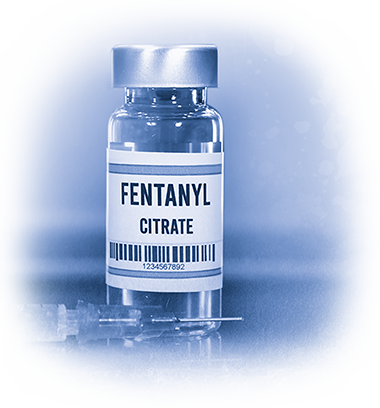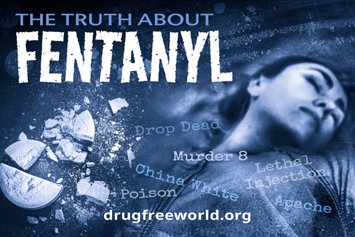A SHORT HISTORY OF FENTANYL

Fentanyl was developed as a medical drug in 1959 and approved for medical use in 1968. It was first used in hospitals as an injection for severe pain or in anesthetic formulas for surgery. Because of fentanyl’s addictive potential, it is primarily prescribed only for severe pain in end-of-life care, such as with terminal cancer patients.1
In the 1990s, the fentanyl patch was approved and, in 1998, fentanyl began being distributed in lozenge form. Following those releases, minor quantities of these forms were diverted from medical facilities and illegally sold on the street, resulting in a small number of overdose deaths each year.
OVERDOSE DEATHS
In 2006, a dramatic increase in fentanyl-related overdose deaths began to be recorded in the United States. They were traced to an illicit lab in Toluca, Mexico. When this lab was closed down, the number of deaths dropped back to low levels.2
Then, in 2013, deaths started increasing again as labs in Asia manufactured fentanyl in large quantities.1 Established drug-trafficking organizations began importing fentanyl from these labs, often adding fentanyl to heroin, methamphetamine, cocaine and counterfeit prescription drugs. As trafficking patterns expanded, overdose deaths steadily increased again.
The Centers for Disease Control and Prevention estimates yearly fentanyl-related deaths at more than 70,000. Over one year, it is estimated that 84 percent of opioid deaths involved a drug from the fentanyl family.
STRONGER THAN FENTANYL

There are dozens of drugs related to fentanyl, some of them even stronger. For example, carfentanil is 100 times more powerful than fentanyl and is used to treat elephants. However, dealers have added it to drugs intended for people, causing thousands of deaths.
REFERENCES
- Fentanyl Factsheet, United States Drug Enforcement Administration
- Nonpharmaceutical Fentanyl-Related Deaths, Multiple States, April 2005–March 2007, Centers for Disease Control, Reviewed July 23, 2008
Updated:












